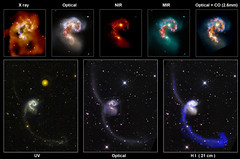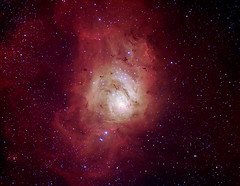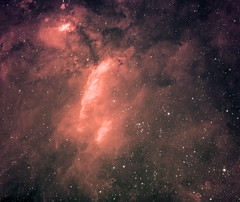This is the translation and adaptation to English of my article “Eclipse de cuerpo“, originally published on Sunday, 21st Oct 2018 in the Supplement “El Zoco” of the newspaper Diario Córdoba. This article summarizes my experience after being diagnosed by the Guillain-Barré Syndrome. I’m still recovering from this, as plenty of rehabilitation and gym are needed. So you are still wandering why I have not answered your email… well, that it is! Thanks a lot for all your support during these hard times.
During the second week of July I was in my natal city, Córdoba (Spain), giving talks at the University of Cordoba within the activities of its Foro Único (which I have the privilege of being part of since its creation) together with the Scientific Culture Unit of the University of Córdoba (“Unidad de Cultura Científica de la Universidad de Córdoba“) and the Astronomical Association of Córdoba. At the same time, I was finishing preparing my contributions (including an invited talk in a plenary session) for the Astronomy Conference and Science Meeting organized every two years by the Spanish Society of Astronomy (“Sociedad Española de Astronomía”) and held in Salamanca (Spain) the following week . These activities promoted not only the dissemination of my scientific work but also the need to inform society about the astronomical discoveries we as researchers are doing.
Without expecting it, and in just four days, from lectures, nice walks, talks, “tapas” and meetings with collaborators, scientists, astronomers and friends in Córdoba, I had to be admitted to the Intense Care Unit (ICU) of the Reina Sofía University Hospital with an induced coma and with the body paralyzed almost entirely. I had been affected by the Guillain-Barré syndrome.
This ill-fated and terrible neurological disease, of which some details are still unknown as to why exactly it does occur, is an autoimmune disorder in which the antibodies generated to attack a virus also attack the nervous system. Consequently the nerves can not send the signals effectively and the muscles lose their ability to respond. This leads to the paralysis of legs, arms, hands and feet, the inability to have sensations such as pain, cold or heat, and even the paralysis of the digestive, excretory and respiratory systems. Although Guillain-Barré syndrome only occurs in 1-2 cases per 100 thousand people per year, its death rate is around 7.5%, usually as a result of respiratory failure induced by paralysis.
Fortunately I was in Córdoba, where one of the best hospitals in Spain (and I would add of Europe or even the whole world) is located. The professionals at the Hospital Universitario de Reina Sofía not only diagnosed the disease quickly, but they did an exhaustive follow-up of everything that was happening to me. The treatment (plasmapheresis, that is, “filtering” the blood to extract the plasma, leaving only the red blood cells, white blood cells and platelets, which did return to the body), the speed of taking me to the ICU to intubate, feed me and make me eliminate my waste, and the rehabilitation from day zero were key to recovery.

Me at the UCI at Hospital Universitario Reina Sofía on 3rd August 2018, just after the doctors removed the breathing tube.
In 10 days I was able to breathe again for myself and talk (I do not recommend being fully conscious and not being able to communicate). In 3 weeks I was able to use my mobile phone again, write and feed myself. In just a month and a half I was able to walk again, with help. A month ago, on Sep 19th, at the insistence of the Australian insurance (as I do not quote in the Spanish social security all the hospital expenses were charged to my Australian travel insurance), I returned to Sydney. Three months later I start to see it as a bad dream, I have returned to work and I have a relatively normal life, only that I still have a lot of muscle to recover (I lost almost 15 kilos of weight) and I still get fatigued more than usual, I still need to work part-time and do plenty of rehab every day. In 6 months, I hope to be finally fully recovered.
In total I spent 19 days (three of them unconscious) in the ICU of Reina Sofía and another two weeks more in plant, plus one month going daily to rehabilitation, where day by day the team of doctors, nurses, physiotherapists, assistants, caretakers and others showed excellent treatment both professionally and personally.

Me with some of the doctors, nurses, and specialists at Hospital Universitario Reina Sofía who helped me to recover so fast! This was taken on 6th September 2018, when I was starting to walk a bit (the walking frame I was still using by then is not seen in the photo).
That’s why my first Astronomy article this season, and the first science or outreach article I write after returning to work this third week of October (three months after the start of the illness) is dedicated to the exceptional staff of Reina Sofía. I do not want to give a long list of names for fear of leaving many people behind, but I insist that I do not have enough words of thanks to each and every one of them. It is something that should make us feel very proud to Cordoba, and we should support at all times to continue to make the impressive medical and research work that takes place at the Hospital Universitario de Reina Sofía.
It happened that, being in the phase of improvement at the end of July but still in the ICU, there was a total lunar eclipse visible from Europe and Asia. This lunar eclipse in the middle of summer delighted amateur astronomers and the general public, who enjoyed this beautiful celestial spectacle that does not need a telescope to be observed. A total lunar eclipse occurs when our satellite enters into the shadow of the Earth. The phantom color between orange, red and black that the Moon acquires is a consequence of the light refracted by the Earth’s atmosphere. The poets can say that we are seeing all the sunsets and sunrises that are happening on Earth at that moment. From Spain the total phase occurred shortly after the departure of the full moon over the eastern horizon, which left beautiful prints of our red satellite next to monuments or mountains. It also proliferated through social networks multitude of “fake photographs” made as assemblies (I was shown one of the Roman Bridge in Córdoba with a full moon eclipsed so big that to have been real our satellite should be 20 or 30 times closer to Earth than it actually is!) .
Here I compile the wonderful shots that the astrophotographer Paco Bellido took from Córdoba showing the moon completely eclipsed (below left) and two shots of the eclipse when the moon was leaving the Earth’s shadow.
This lunar eclipse occurred on July 27 and I missed it (unfortunately, the window of my ICU room did not have the correct orientation). But for this I had suffered an eclipse of the body myself!









